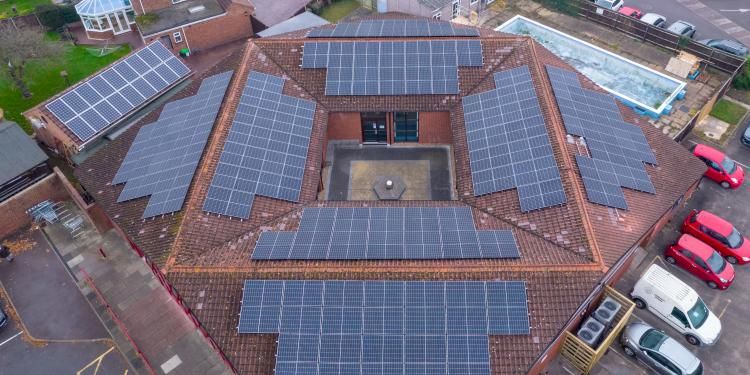Scheme:
Phase 1 Public Sector Decarbonisation Scheme
Technologies used:
Solar PV, Solar battery storage
Region:
South East
Client type:
Local authority
Your partner for a low carbon future

Phase 1 Public Sector Decarbonisation Scheme
Solar PV, Solar battery storage
South East
Local authority
Total grant value
Woodley Library has been transformed into one of the most energy efficient buildings in Wokingham borough, thanks to funding from the Phase 1 Public Sector Decarbonisation Scheme.
The work at the library, undertaken by Wokingham Borough Council was undertaken with the aim of achieving Operational Net Zero Carbon for the existing building. The project was completed in late 2021 and has now been operational for a year.
It was funded by a £266,375 grant from the Phase 1 Public Sector Decarbonisation Scheme, delivered by Salix Finance on behalf of the Department for Energy Security and Net Zero (formerly the Department for Business, Energy and Industrial Strategy).
Council executive member for climate emergency and resident services Cllr Sarah Kerr, said: “To take an older building like Woodley Library and turn it into one of the most energy-efficient sites in the borough sets a really good benchmark for what can be achieved."
“Not only has it made a significant difference to the building’s carbon footprint, it has also seen a move away from fossil fuels that are bad for the environment. This has set a good template for future decarbonisation projects, which will help us to achieve our aim of being carbon neutral as an organisation and as a borough by 2030.”
The scheme, driven by Wokingham Borough Council's Climate Emergency Action Plan, has acted as a pilot project for future Wokingham Borough Council decarbonisation projects aligned with the aim of being carbon neutral as an organisation by 2030, and as a borough by 2030.
The library, built in 1986, was still running on its original boilers, and whilst some energy reduction works have been undertaken, the building still had a high Energy Use Intensity of 232kWhr/ m2, and annual emissions associated with operational energy of 29.8 tCO2.
A feasibility study illustrated that the building’s energy performance was within the worst percentile both nationally and regionally.
A key driver behind the project was reducing the running costs of the building.
Technically, the most significant challenge was retrofitting high-temperature heat pumps (this option was selected to avoid replacement of all internal heat emitters) within the old boiler room, due to the lack of space. The Council say that close collaboration between the contractor team, lead by M & B Electrical, and the design team Ruane Construction Design and Consultancy allowed for this to occur successfully.
Works included the addition of solar PV onto the existing Roof, installation of battery storage and building air tightness enhancement including a new wind lobby.
The project was completed in late 2021, with an energy monitoring system functional from spring 2022. This has allowed a review of the actual performance of the building against the initial predictions. The graph below shows the actual energy performance of the building to date from March 22, with the percentages showing the percentage difference between the predicted and actual energy usage. The difference between the totals is that the predicted performance was 110.7% of the actual building performance.
A similar review has been carried out on the energy generation predictions, with the actual generation being 105% of the predicted performance.
From March 2022, the building has generated 199% of the energy used. This period does include the months of June to August which provide a significant amount of the solar PV energy generation of any given year, however, the review suggests that the building is very likely to be on track to be net zero carbon operational, with sufficient data to review this to be obtained in April 2023.
